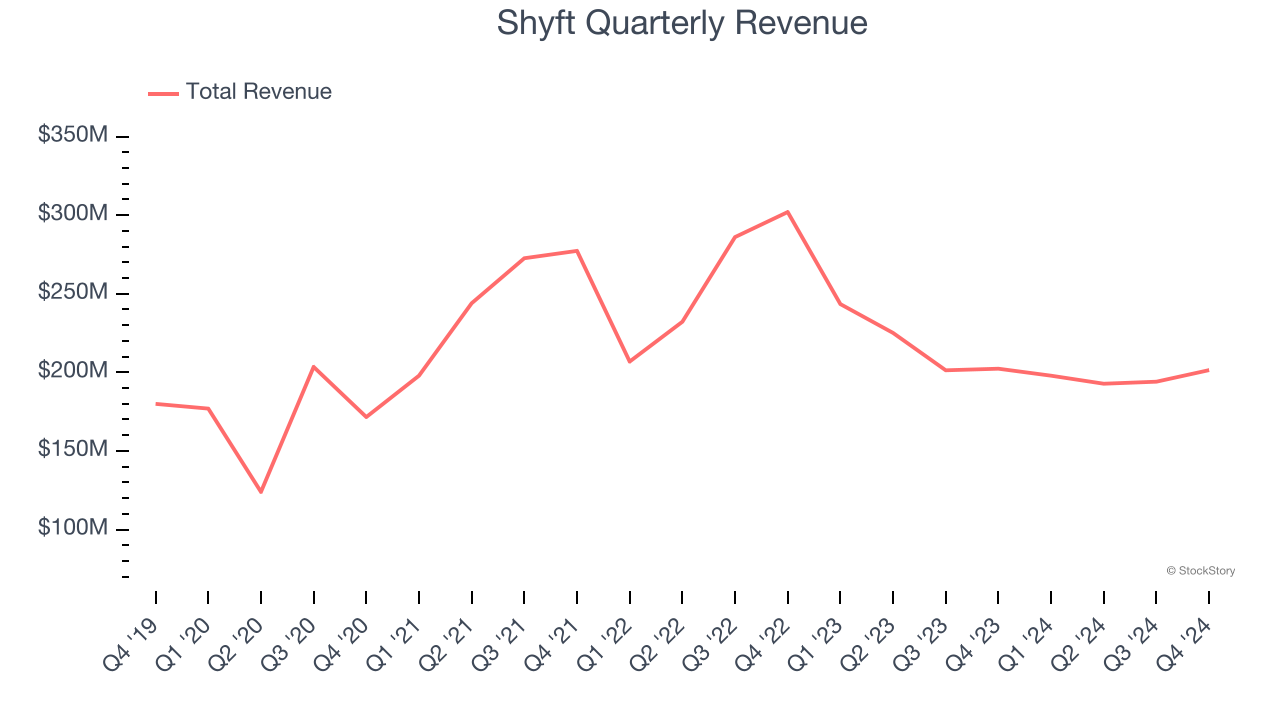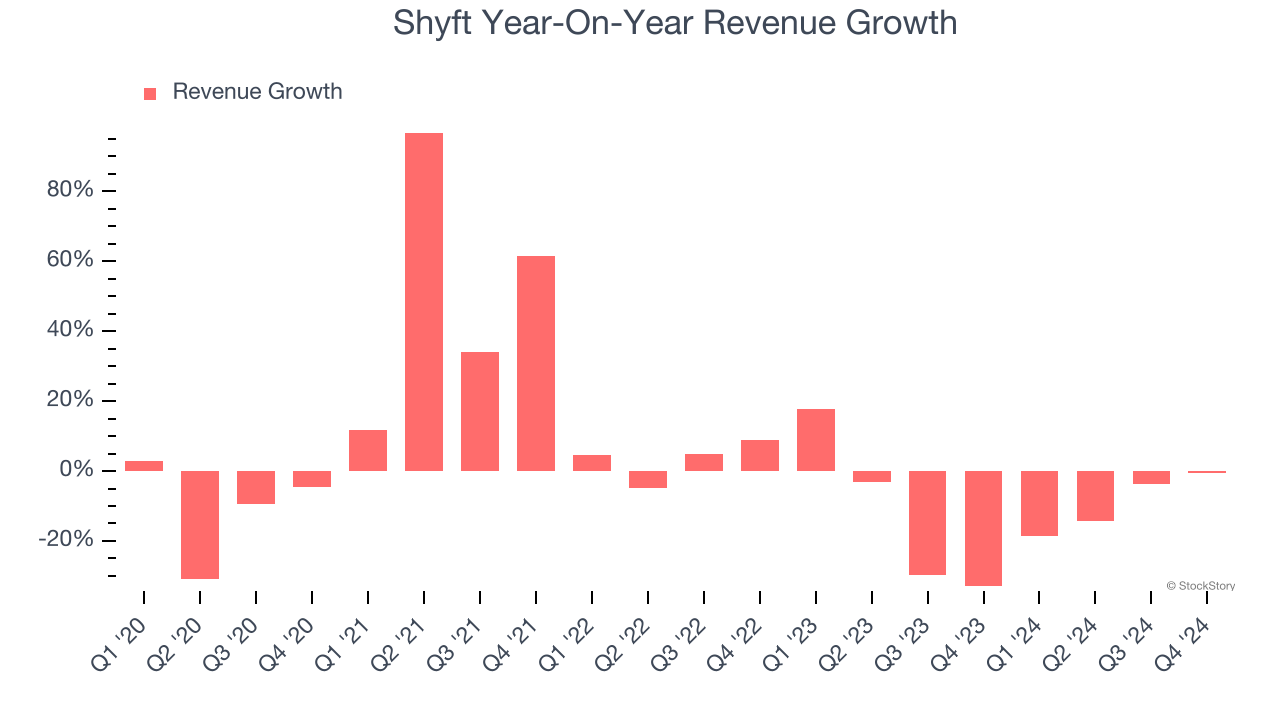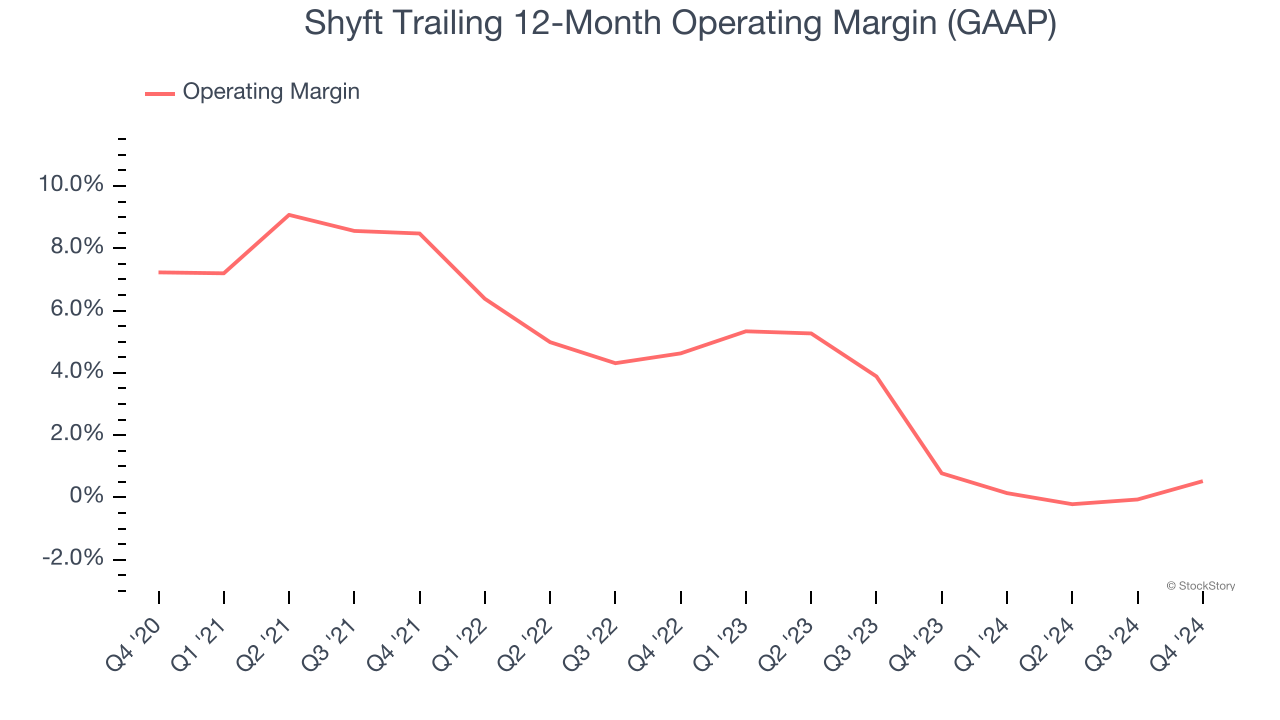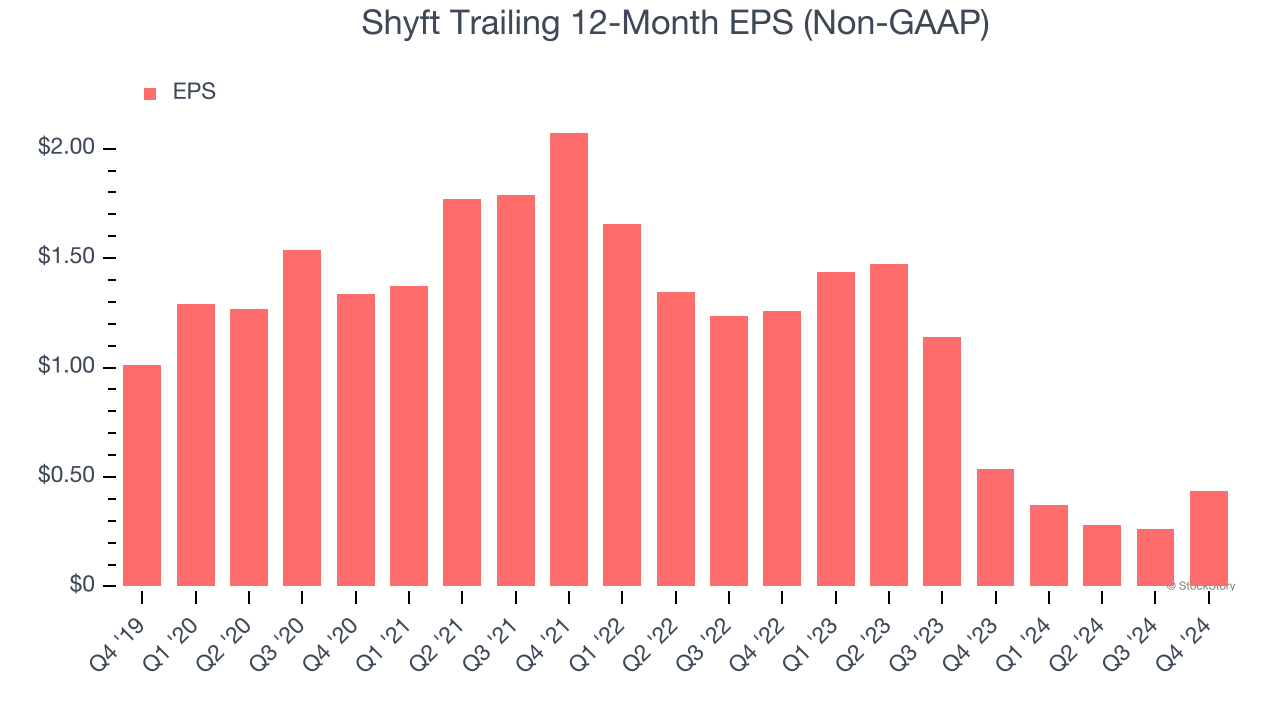
Vehicle manufacturer Shyft (NASDAQ: SHYF) fell short of the market’s revenue expectations in Q4 CY2024, with sales flat year on year at $201.4 million. On the other hand, the company’s outlook for the full year was close to analysts’ estimates with revenue guided to $920 million at the midpoint. Its non-GAAP profit of $0.15 per share was 18.4% above analysts’ consensus estimates.
Is now the time to buy Shyft? Find out by accessing our full research report, it’s free.
Shyft (SHYF) Q4 CY2024 Highlights:
- Revenue: $201.4 million vs analyst estimates of $210.4 million (flat year on year, 4.3% miss)
- Adjusted EPS: $0.15 vs analyst estimates of $0.13 (18.4% beat)
- Adjusted EBITDA: $15.94 million vs analyst estimates of $13.8 million (7.9% margin, 15.5% beat)
- Management’s revenue guidance for the upcoming financial year 2025 is $920 million at the midpoint, in line with analyst expectations and implying 17% growth (vs -9.3% in FY2024)
- Adjusted EPS guidance for the upcoming financial year 2025 is $0.80 at the midpoint, beating analyst estimates by 14.5%
- EBITDA guidance for the upcoming financial year 2025 is $67 million at the midpoint, below analyst estimates of $74 million
- Operating Margin: -1.5%, up from -3.8% in the same quarter last year
- Free Cash Flow Margin: 5.3%, up from 3.4% in the same quarter last year
- Market Capitalization: $432.1 million
"Our disciplined execution of Shyft's operational framework drove meaningful adjusted EBITDA growth and margin improvement," said John Dunn, President and CEO.
Company Overview
Notably receiving an order from FedEx for electric vehicles, Shyft (NASDAQ: SHYF) offers specialty vehicles and truck bodies for various industries.
Heavy Transportation Equipment
Heavy transportation equipment companies are investing in automated vehicles that increase efficiencies and connected machinery that collects actionable data. Some are also developing electric vehicles and mobility solutions to address customers’ concerns about carbon emissions, creating new sales opportunities. Additionally, they are increasingly offering automated equipment that increases efficiencies and connected machinery that collects actionable data. On the other hand, heavy transportation equipment companies are at the whim of economic cycles. Interest rates, for example, can greatly impact the construction and transport volumes that drive demand for these companies’ offerings.
Sales Growth
A company’s long-term sales performance signals its overall quality. Even a bad business can shine for one or two quarters, but a top-tier one grows for years. Unfortunately, Shyft struggled to consistently increase demand as its $786.2 million of sales for the trailing 12 months was close to its revenue five years ago. This was below our standards and is a sign of poor business quality.

We at StockStory place the most emphasis on long-term growth, but within industrials, a half-decade historical view may miss cycles, industry trends, or a company capitalizing on catalysts such as a new contract win or a successful product line. Shyft’s recent history shows its demand has stayed suppressed as its revenue has declined by 12.5% annually over the last two years. 
We can better understand the company’s revenue dynamics by analyzing its most important segments, Fleet Vehicles and Specialty Vehicles , which are 55% and 43.5% of revenue. Over the last two years, Shyft’s Fleet Vehicles revenue (commercial delivery vehicles) averaged 13.6% year-on-year declines while its Specialty Vehicles revenue ( RV chassis and truck bodies) averaged 4.4% declines.
This quarter, Shyft missed Wall Street’s estimates and reported a rather uninspiring 0.4% year-on-year revenue decline, generating $201.4 million of revenue.
Looking ahead, sell-side analysts expect revenue to grow 10.4% over the next 12 months, an improvement versus the last two years. This projection is noteworthy and indicates its newer products and services will spur better top-line performance.
Software is eating the world and there is virtually no industry left that has been untouched by it. That drives increasing demand for tools helping software developers do their jobs, whether it be monitoring critical cloud infrastructure, integrating audio and video functionality, or ensuring smooth content streaming. Click here to access a free report on our 3 favorite stocks to play this generational megatrend.
Operating Margin
Shyft was profitable over the last five years but held back by its large cost base. Its average operating margin of 4.4% was weak for an industrials business. This result isn’t too surprising given its low gross margin as a starting point.
Analyzing the trend in its profitability, Shyft’s operating margin decreased by 6.7 percentage points over the last five years. The company’s performance was poor no matter how you look at it - it shows its expenses were rising and it couldn’t pass those costs onto its customers.

This quarter, Shyft generated an operating profit margin of negative 1.5%, up 2.3 percentage points year on year. Since its gross margin expanded more than its operating margin, we can infer that leverage on its cost of sales was the primary driver behind the recently higher efficiency.
Earnings Per Share
Revenue trends explain a company’s historical growth, but the long-term change in earnings per share (EPS) points to the profitability of that growth – for example, a company could inflate its sales through excessive spending on advertising and promotions.
Sadly for Shyft, its EPS declined by 15.4% annually over the last five years while its revenue was flat. This tells us the company struggled because its fixed cost base made it difficult to adjust to choppy demand.

Diving into the nuances of Shyft’s earnings can give us a better understanding of its performance. As we mentioned earlier, Shyft’s operating margin improved this quarter but declined by 6.7 percentage points over the last five years. This was the most relevant factor (aside from the revenue impact) behind its lower earnings; taxes and interest expenses can also affect EPS but don’t tell us as much about a company’s fundamentals.
Like with revenue, we analyze EPS over a more recent period because it can provide insight into an emerging theme or development for the business.
For Shyft, its two-year annual EPS declines of 41% show it’s continued to underperform. These results were bad no matter how you slice the data.
In Q4, Shyft reported EPS at $0.15, up from negative $0.03 in the same quarter last year. This print easily cleared analysts’ estimates, and shareholders should be content with the results. Over the next 12 months, Wall Street expects Shyft’s full-year EPS of $0.44 to grow 60.6%.
Key Takeaways from Shyft’s Q4 Results
We were impressed by how significantly Shyft blew past analysts’ EPS and EBITDA expectations this quarter. We were also glad its full-year EPS guidance beat. On the other hand, its revenue missed due to underperformance in its Fleet Vehicles segment, and its full-year EBITDA guidance fell short of Wall Street’s estimates. Overall, this quarter was mixed. The stock traded up 3.7% to $13 immediately following the results.
So should you invest in Shyft right now? We think that the latest quarter is only one piece of the longer-term business quality puzzle. Quality, when combined with valuation, can help determine if the stock is a buy. We cover that in our actionable full research report which you can read here, it’s free.





